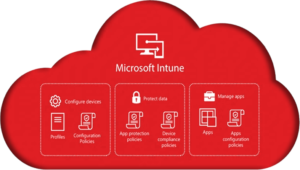Windows 10 Security Enhancements: General Improvements
Windows 10 comes several new security enhancements. First, it fully supports UEFI and Secure Boot, making it much more difficult for hackers to insert malware into your boot sequence.
Second, the 1511 version comes with a new BitLocker encryption key called XTS-AES. This new key provides additional protection against attacks. Also, with Windows 10, your BitLocker recovery key can be stored in Azure Active Directory. Policies can also be delivered from Azure AD to encrypt devices that bind to it.
Third, Windows 10 has a new feature called Credential Guard. Going over and configuring Credential Guard will be covered in a post next week.
Login Enhancements
All of these enhancements can be found in the Settings app by clicking Accounts, then Sign-in Options.
Next, Windows 10 comes with three new methods of signing into a machine. First, PIN sign in, allows you to sign in using a pin instead of your password. This PIN is stored in the TPM module and is devices specific, so the PIN that you set on one device cannot be used to unlock another device. In domain environments, using PINs can also help mitigate pass-the-hash attacks.
Windows Hello is also a new method of signing into a machine. This method uses a RealSense camera to capture your face. Whenever you login, the camera analyzes your face and logs you in. A RealSense camera analyzes your facial features and doesn’t care whether you grow a bread or cut your hair. Newer laptops normally come with this special camera, and you can buy them just like any other webcam for desktop PCs. You do not see the options for Windows Hello in my screenshot because I am using a desktop computer without a webcam, but if you had a device capable of RealSense, you would another option there.
Finally, you can do a picture password. This works best on tablets, and allows you to use a picture that you swipe over as your password. You essentially create a “connect the dots” diagram on the picture to use as your password.





